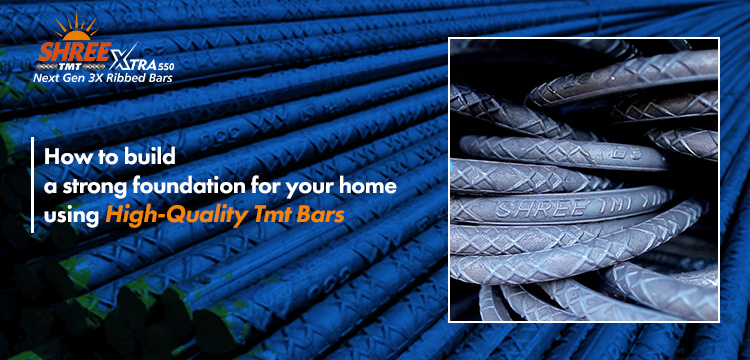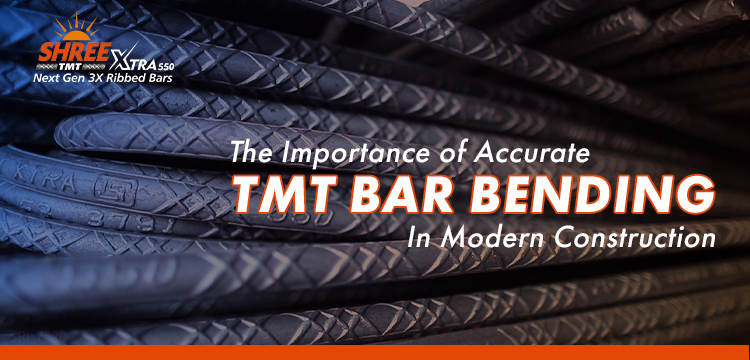How to Build a Strong Foundation for Your Home Using High-Quality TMT Bars
A home’s foundation is its fundamental support system, determining the structure’s longevity, stability, and overall safety. At the heart of a robust foundation lies the critical choice of reinforcement material, with Thermo-Mechanically Treated (TMT) bars emerging as the gold standard for modern construction.
Understanding the Importance of a Solid Foundation
Before diving into the specifics of TMT bars, it’s crucial to understand why a strong foundation matters. Your home’s foundation is more than just a concrete base—it’s the critical interface between your structure and the ground, responsible for:
- Distributing the entire building’s weight evenly
- Protecting against soil movement and settlement
- Providing resistance against environmental stresses
- Preventing structural damage and potential collapse
Why TMT Bars are Essential for Foundation Strength
TMT bars represent a technological breakthrough in construction reinforcement. Unlike traditional steel reinforcements, these bars undergo a unique manufacturing process that significantly enhances their structural properties:
Advantages of High-Quality TMT Bars
- Superior Strength and Ductility: High-grade TMT bars offer exceptional tensile strength, allowing them to withstand substantial loads without compromising structural integrity. Their unique manufacturing process creates a hard outer surface with a soft, ductile core, enabling better load distribution and reduced risk of sudden failure.
- Corrosion Resistance: The specialized thermal treatment creates a protective layer that significantly reduces the bars’ susceptibility to rust and corrosion. This characteristic is particularly crucial in foundations exposed to moisture and varying soil conditions, ensuring long-term durability.
- Enhanced Bonding with Concrete: TMT bars feature a ribbed surface that creates superior bonding with concrete. This improved adhesion ensures more effective load transfer and minimizes the risk of structural separation over time.
- Earthquake Resistance: The unique metallurgical structure of high-quality TMT bars provides exceptional seismic resistance. Their ability to absorb and dissipate energy during ground movements makes them crucial in earthquake-prone regions, offering enhanced safety and structural integrity.
- Thermal Stability: TMT bars demonstrate remarkable performance under extreme temperature conditions. Their ability to maintain structural integrity during fire incidents provides an additional layer of safety, making them crucial for long-term building protection.
- Weight Optimization: High-quality TMT bars offer superior strength-to-weight ratio, allowing for more efficient construction. This means less steel can be used to achieve the same structural strength, leading to cost-effectiveness and reduced overall construction weight.
- Weldability and Workability: Unlike traditional reinforcement bars, high-grade TMT bars offer excellent weldability and can be easily bent or shaped without compromising their inherent strength. This flexibility allows for more intricate and precise construction techniques.
- Environmental Sustainability: Modern TMT bar production processes focus on reducing carbon footprint, making them a more environmentally friendly option compared to traditional reinforcement materials.
Why Shree TMT Bars Stand Out in Quality
Shree TMT bars distinguish themselves through several key attributes:
- Innovative 3X Ribs Design: Uniquely engineered ribbed structure dramatically enhances concrete bond strength and structural stability.
- Advanced German Quenching Technology: State-of-the-art manufacturing process creates superior steel with exceptional strength and durability.
- Comprehensive Certification: BIS and Green Pro certified, ensuring top-tier quality and environmental responsibility.
- Superior Corrosion Resistance: Specialized thermal treatment provides unmatched protection in challenging environmental conditions.
- Cost-Effective Performance: Intelligent design allows up to 20% reduction in concrete and steel usage while maintaining maximum structural integrity.
- Rigorous Quality Control: Implementing multiple testing stages to ensure consistent high performance
Practical Steps for Using TMT Bars in Foundation Construction
1. Select the Right Grade
Choose TMT bars with appropriate grades (Fe 500, Fe 550, or Fe 600) based on your specific structural requirements. Higher-grade bars offer increased strength and are suitable for areas with complex geological conditions.
2. Proper Placement and Spacing
- Ensure precise bar placement according to structural engineering specifications
- Maintain correct concrete cover to protect bars from environmental exposure
- Use appropriate spacing to distribute loads evenly
3. Quality Checking and Maintenance
- Inspect TMT bars for manufacturing defects before installation
- Verify straightness, surface condition, and bend tests
- Implement regular foundation inspections to detect early signs of potential issues
Investing in high-quality TMT bars, particularly Shree TMT bars, is a strategic decision that goes beyond mere construction—it’s a commitment to safety, durability, and long-term structural integrity. By understanding their unique properties and implementing them correctly, you create a foundation that stands strong against time, environmental challenges, and structural stresses.


